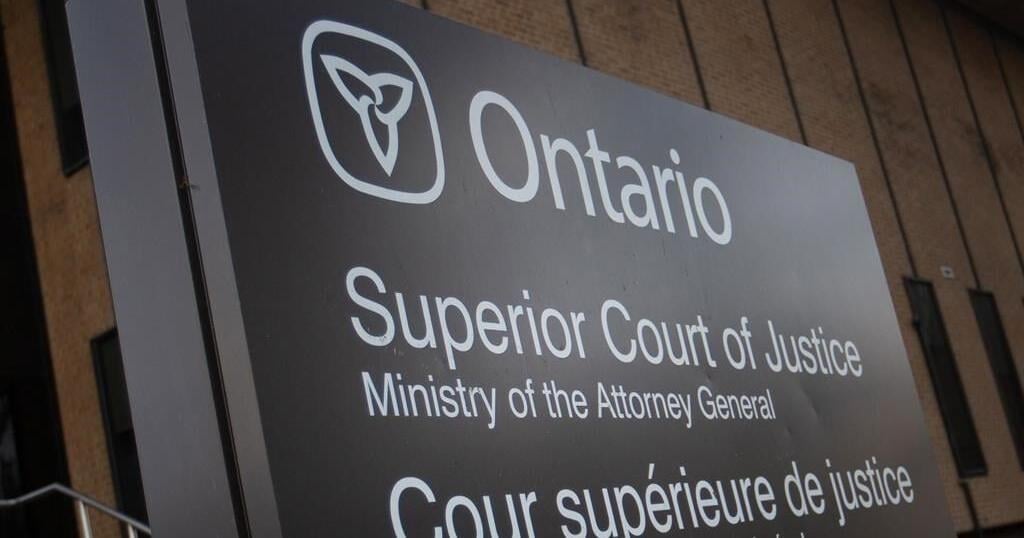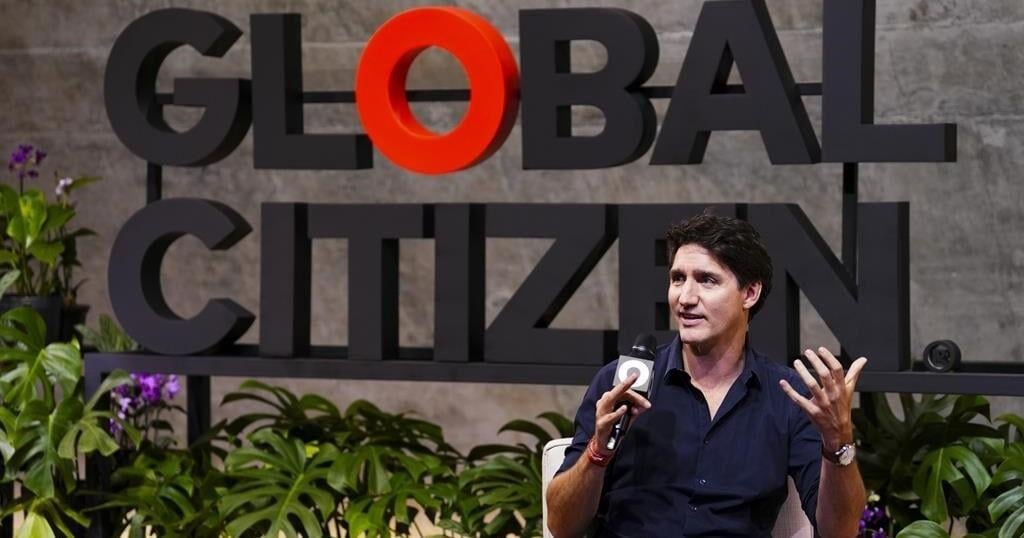VANCOUVER – When NDP Leader David Eby announced this month that the province would open “secure facilities” to provide involuntary care forpeople with severe drug addiction or mental health problems, it represented a moment of policy unitywith the rival B.C. Conservatives ahead of the fall election.
But for drug policy advocate DJ Larkin, the consensus was loaded with irony — since the province currently isn’t able to supply enough beds even for those who want treatment, let alone those who don’t.
“This shift toward involuntary treatment is a knee-jerk reaction,” Larkin, who’s the executive director with the Canadian Drug Policy Coalition, said in an interview. “It is quite obviously a political move to try to create a simple solution to a problem that requires multiple interventions.”
With more than 15,000 lives lost to toxic drugs since the declaration of a public health emergency in B.C. in 2016, the province has been at the cutting edge of debate, science and policy about how to deal with the crisis.
Critics, including Larkin, say the issue itself has been tainted by politicization.
BC Green Leader Sonia Furstenau has accused the major parties of using “dehumanizing rhetoric” against drug users, while former chief coroner Lisa Lapointe has called plans for involuntary treatment unrealistic and lacking scientific justification.
Advocacy group Moms Stop the Harm has branded the NDP government’s rollback of a drug decriminalization project as “ludicrous,” while others say drug users are being scapegoated.
“The politicization is devastating,” said Larkin, executive director of the Canadian Drug Policy Coalition, a group of more than 50 organizations. “This rhetoric has really positioned people who use drugs as being the problem.”
Larkin said B.C.’s three-year decriminalization project and the implementation of safer supply alternatives to toxic street drugs had not been designed in a way that would be successful.
“Right now, we find ourselves at a crossroads where harm reduction and policy change is getting blamed for where we are, and there’s no evidence to support that. That is not correct,” Larkin said.
“We haven’t, however, taken robust-enough steps to be able to support programs like that to actually get the benefit that we need.”
GRIM BACKDROP FOR POLICY PUSH
The B.C. election campaign comes after the province suffered a record 2,551 drug deaths linked to the unregulated market in 2023.
The crisis has been the grim backdrop for a range of policy initiatives, including the decriminalization pilot allowing adults to carry up to 2.5 grams of opioids, cocaine, methamphetamine or ecstasy for personal use without facing charges. It relied on an exemption granted by Health Canada under the Controlled Drugs and Substances Act to permit open drug use in some public spaces.
There are also safer supply programs which provide prescription alternatives to toxic illicit drugs.
In July, Provincial Health Officer Dr. Bonnie Henry recommended exploring the idea to expand this to provide alternatives to opioids and other street drugs without a prescription. Ex-coroner Lapointe has also advocated for non-prescription access to controlled drugs.
But B.C.’s safer supply programs have come under criticism after police said some of the prescribed drugs, such as the opioid hydromorphone, were finding their way into the hands of illegal drug dealers.
Eby has repeatedly shot down suggestions for non-prescription safer supply, and in April he announced that drug use in public spaces including parks, public transit and hospitals was being recriminalized.
Leslie McBain, co-founder of the policy advocacy group Moms Stop the Harm, waspart of the working group on the decriminalization pilot project. She called the NDP’s rollback disappointing, saying it was “just political” and that the group had not been consulted.
“It also is ludicrous, because the people who are out there doing that in public places have no other place to do it because there isn’t enough housing, because there aren’t enough safe consumption services or overdose prevention sites,” she said.
Lapointe said that while it is difficult to measure the effectiveness of decriminalization, it was “not a failure.” She said statistics from the coroner now show fewer people dying post-decriminalization.
“There is a trend down in fatalities, and at this point, the last data that they released was the end of July, they are showing the lowest rate of death in this province since 2020. That’s post-decriminalization, and the number of youth dying has also reduced. That is significant.”
She said there is “little evidence” to support the effectiveness of involuntary care, so cautioned about relying on it for an “answer to this very complex public health emergency.”
The leaders of the NDP and B.C. Conservatives argue their plans are compassionate to those suffering with addiction, and would address public safety issues.
Eby pledged “secure facilities to provide involuntary care under the Mental Health Act” for those with severe addictions who are mentally ill and have sustained a brain injury. That was a shift in the party’s platform, which had previously focused on harm reduction.
The NDP said it would add more than 400 mental health beds for involuntary care at new and expanded hospitals.
“These are the people who we see in our streets, lying face down on the sidewalk, or involved in incidents with people where they’re threatening or sometimes setting fires or other disturbing conduct in communities,” he said at a news conference. “They’re not being cared for in our system right now (and) the system is not adequately responding to this group of patients,” he said, adding that involuntary care was just one part of the NDP plan.
B.C. Conservative Leader John Rustad has also promised involuntary treatment and secure facilities. But he criticized Eby’s approach, saying it would take hospital beds from other people.
“My perspective is we need to build out capacity,” he said in an interview.
“It’s going to be a big process. It’s not going to happen overnight, but it is the only way to solve this problem. Clearly, the paththat (B.C.) has been on with decriminalization and safe supply — which is not safe, it’s very dangerous drugs — is not working.”
Rustad has also said the Conservatives would shut down injection sites in Richmond, B.C., calling them “drug dens,” echoing terminology used by federal Conservative Leader Pierre Poilievre.
The Greens, meanwhile, have said they want to expand prescribed safer supply of opioids and other drugs, and to explore a non-prescription model, strategies endorsed by Lapointe, who stood with Furstenau when the party unveiled its polices on Tuesday.
Lapointe said the province would be “setting ourselves up for a disaster” if emphasis shifted to involuntary care.
“There are wait-lists for detox, there are wait-lists for recovery. If people can’t access the voluntary care that they’re trying to access, how can we then incarcerate them involuntarily when there’s no evidence that that would be successful,” she said during the news conference.
MIXED RESULTS FOR DRUG STUDIES
Research on the efficacy of strategies employed in B.C. has produced varied results.
A study published in JAMA Internal Medicine in January found an almost 63 per cent “relative increase” in the opioid overdose hospitalization rate across B.C. after the introduction of safer supply.
In an interview with The Canadian Press in April, study co-author Shawn Bugden said they were not trying to imply “causality” and the result may be due to various reasons, such as the unregulated market.
Another study, published in the British Medical Journal the same month, found that one day or more of prescription opioid dispensation was associated with “significantly reduced all-cause mortality” and overdose deaths over the next week.
In response to the push for involuntary care, Larkin cited a Swedish study published in 2022 in the journal Drug and Alcohol Dependence. It found a “very high” risk of dying immediately after discharge from compulsory care.
Some community leaders, however, say they are juggling mental health and addiction issues as well as public safety concerns and crime.
Kelowna, B.C., Mayor Tom Dyas said implementing mandatory care was “necessary.” He told a panel at the recent Union of B.C. Municipalities convention that his city saw 2,274 overdose calls in 2023, a 25 per cent increase from 2022.
“In reality, allowing these individuals with mental health and addiction issues to suffer on our streets is just not compassionate,” he said.
He said any politicization is unintentional.
“It’s a reality that all of our communities are facing, that our residents are facing, that our businesses are facing,” he said.
Larkin said a main reason for public concern about the crisis is that there are “simply more people in public spaces.”
“The issue of homelessness has been become conflated with public drug use,” Larkin said, adding that the drug supply is also more unpredictable and contaminated with benzodiazepines, which are sedatives and tranquillizers.
“That causes people to be extremely sedated, potentially for hours,” Larkin said. “So, it doesn’t necessarily mean that people are using more or there are more people who are having to use drugs in a public place, it just means people are more visible, because they’re going to be outside and look very sedated for a long time.”
The pandemic is largely to blame, Larkin said, explaining it prompted a “dramatic change toward more volatile and potent drugs.”
Lapointe said regulation was “common sense” but one of the biggest issues is that there “aren’t enough physicians to prescribe.”
“Regulating drugs is not a radical idea. It is irresponsible to allow thousands of people to die across our country without stepping in,” she said. “Regulation is common sense.”
This report by The Canadian Press was first published Sept. 28, 2024.

























